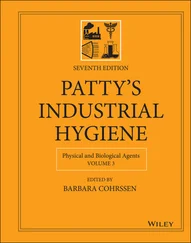5 CENTER FOR SAFETY AND HEALTH SUSTAINABILITY (CSHS)
In approximately 2009, the American Society of Safety Engineers recognized the significant impact of sustainability on the practice of safety and health. In collaboration with the American Industrial Hygiene Association (AIHA), the Institution of Occupational Safety and Health (IOSH) and the Canadian Society of Safety Engineers (CSSE), the Center for Safety and Health Sustainability (CSHS) was formed as a 501(c)3 not‐for‐profit organization in 2010. The CSHS represents over 100 000 workplace safety and health professionals worldwide. The main focus of the CSHS was to promote the recognition of the importance of what is now called human capital for sustainability from the major focus on environmental practices alone. Since the establishment of the CSHS, they have published a number of studies and recommendations. In one of their earlier publications, it was shown that some companies named as being in the top 100 sustainable companies had very poor reporting practices and even high rates of fatalities (12). They reported that less than 10% of the 100 best organizations complied with the GRI recommendations. They also reported that five of the most sustainable organizations reported at least 10 fatalities with one reporting 49 fatalities in that reporting year. This initial report clearly demonstrated the lack of attention paid to safety and health within the sustainability field.
The CSHS has published their own guidelines for safety and health reporting in sustainability. This is the CSHS Best Practice Guide for Occupational Health and Safety in Sustainability Reports (13). The guidelines start with recommendations for a description of the safety and health function and scope. This includes:
Organizational structure and reporting relationships including reporting relationships for the central or corporate safety and health function(s) on both an indirect and direct basis and if there is any reporting relationship to the Board of Directors.
Scope of the safety and health programs coverage (all sites, joint ventures, suppliers, etc.).
A description of the safety and health policies or codes of conduct.
A description of the management systems for safety and health (such as a proprietary approach or the use of a nationally or internationally recognized standard or guideline like ISO 45001) and any registration or certification of the system by a third party accreditor.
A description of safety and health program and performance auditing.
The guidelines provide a minimum recommended base of safety and health reporting with suggestions for additional elements to be included in the sustainability report. The minimum recommendations for each metric are to be reported numerically and graphically for a minimum of the last five years (if the data are available). These metrics follow:
1 Lost‐time injury and illness frequency rate, lost‐time injury and illness severity rate, and number of fatalities (all employees/workers – five year period).
2 Lost‐time injury and illness frequency rate, lost‐time injury and illness severity rate, and number of fatalities (all contractors – five year period).
3 Percentage of owned or leased manufacturing, production, or warehousing facilities that have implemented an occupational safety health management system that meets nationally or internationally recognized standard or guideline.
4 Percentage of owned or leased manufacturing, production, or warehousing facilities that have had their occupational safety health management systems audited.
5 Percentage of direct/first‐tier suppliers' facilities that were audited for compliance with safety and health standards.
Employee/worker – A person who is subject to the control of the organization's management for the performance of work duties, including contract workers and temporary workers.
Contractor – External person(s) providing services to an organization at a workplace in accordance with agreed specifications terms and conditions.
Lost‐time injury or illness – A nonfatal occupational injury or illness that causes a loss of time from work beyond the day or shift it occurred.
Lost‐time injury and illness rate – The number of lost‐time injuries and illnesses per million hours worked, calculated using this formula: (Number of lost‐time injuries and illnesses × 1 000 000)/Total hours worked in accounting period.
Lost‐time injury and illness severity rate – The number of days away from work due to workplace injury or illness per one million man‐hours worked, calculated using this equation: (# of workdays lost × 1 000 000)/Total hours worked.
Safety and health standards – Standards required by contract with the supplier, pursuant to an agreed upon Supplier Code of Conduct, or by relevant local law or regulation.
There are also a number of optional but recommended elements listed in the guide. These include the following:
Performance targets (e.g. reduce the injury and illness rate by 10% in three years) and progress to the targets.
Involvement in capital investment decisions (what is the safety and health involvement?) and due diligence for acquisitions.
Worker involvement such as safety and health committees, union representation, joint inspections and investigations, job safety analyses, risk assessments and other areas such as kaizen teams and strike teams.
A description of safety and health training including metrics such as training hours per thousand hours worked.
A description of safety and health risk management approaches.
6 OTHER INITIATIVES AND DEVELOPMENTS IMPACTING SUSTAINABILITY
There were quite a number of other initiatives impacting sustainability as a business practice.
The International Integrated Reporting Council (IIRC) (previously the International Integrated Reporting Committee) was formed in August 2010 and aims to create a globally accepted framework for a process that results in communications by an organization about value creation over time. A leader in the concept of integrated reporting is the former Harvard Business School professor, Robert Eccles. He and Michael Krzus wrote the well‐received book, One Report‐Integrated Reporting for a Sustainable Strategy in 2010. In his book, he makes the argument for combining nonfinancial and financial reporting into one document or effort rather than separate sustainability and annual reports. The question they ask is as follows:
If attention to environmental, social and governance (ESG) performance is integrated into basic business processes, then what is the logic for producing separate financial and nonfinancial reports (14)?
Several major organizations have adopted the “one report” concept and are providing sustainability information in their annual reports along with continually updated information on their website on sustainability performance rather than publishing a separate sustainability report. This approach is well received by those evaluating sustainability performance. Aside from the more current information, there are not the usual page or information limitations found in printed reports. This also is a good forum for internal and external sharing of information on the safety and health‐related performance.
7 WORLD BUSINESS COUNCIL ON SUSTAINABLE DEVELOPMENT
WBCSD is a global, CEO‐led organization of over 200 leading businesses working together to accelerate the transition to a sustainable world that was formed in 1995 through the merger of a couple of similar organizations. Their member companies come from all business sectors and all major economies, representing a combined revenue of more than US$8.5 trillion and with 19 million employees.
Читать дальше












